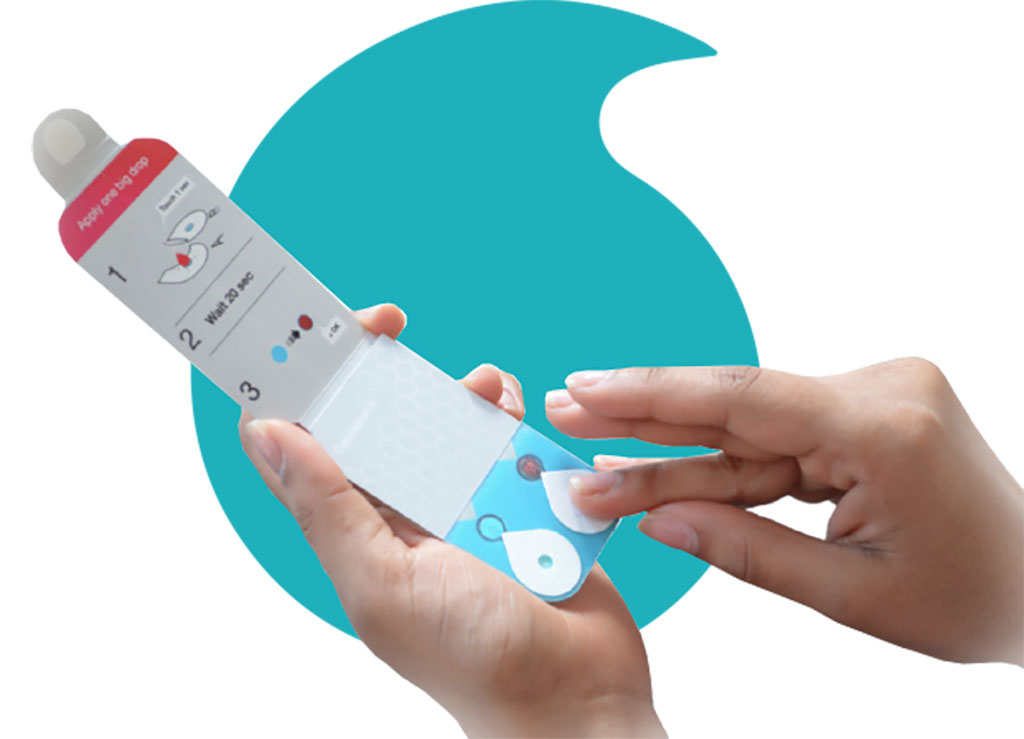Novel Microfluidic qDBS-Sampling Technology Could Find Broader Use in Clinical Diagnosis
Posted on 07 Oct 2022
Dried blood spot (DBS) sampling has been used since the 1960s when introduced in newborn screening. However, a major drawback of conventional DBS cards is the lack of volumetric control and the hematocrit (Ht) effect. As a different Ht, due to different blood viscosity, leads to different spot size a standardized subpunch on conventional DBS does still not provide an exact volume. These limitations reduce conventional DBS to qualitative or semi-quantitative analysis, while most clinical tests are quantitative. To counter this challenge, a novel microfluidic quantitative DBS (qDBS) technology provides an exact sample volume to a pre-cut DBS disc. Since the full volume defined spot is used for analysis, the Ht effect is overcome and the microsample can be used for quantitative tests. Now, a new collaboration aims to accelerate method development for the implementation of a novel microfluidic qDBS-sampling based technology for clinical diagnostics in the US and globally.
Capitainer AB (Solna, Sweden) has entered a collaboration agreement with Timothy J. Garrett Laboratory, College of Medicine, University of Florida (Gainesville, FL, USA) to accelerate method development and pave the way for broader use of the company’s qDBS technology in clinical diagnosis. Capitainer has developed qDBS technology, a microfluidsystem-based technology that offers a solution for easy and accurate self sampling. Capitainer’s blood sampling cards are built on its qDBS technology. It uses a combination of paper and polymer microfluidics to meter a 10 µl fixed volume from an undefined volume of finger prick blood. After applying a drop of blood to the inlet, a metering channel in the device is automatically filled. A valve composed of a thin dissolvable membrane then opens up and removes excessive blood at the inlet. Subsequently, a second membrane opens up, allowing for transfer of the metered blood volume onto the sample collection disk. The sample is allowed to dry forming a high quality DBS sample suitable for quantitative analysis.

Capitainer's qDBS-sampling technology has been validated in real world population studies. No less than 97% of the cards sent back by regular mail to the lab met the approved quality standard for analysis. Additionally, a major study on the advantages of volumetric microsampling DBS devices in monitoring patients with phenylketonuria (PKU), demonstrated conclusively the superiority of Capitainer's solution over conventional cards and competition. Capitainer has been shown to have a superior product for self-sampling with excellent usability and volumetric accuracy and precision. However, there is a shortage of clinical laboratories and methods for microsamples collected at home, and the collaboration will accelerate development of necessary laboratory tools.
"I'm excited about developing precision diagnostics that will enable future health care and look forward to this collaborative effort," said Dr. Timothy Garrett, an associate professor in the university's Department of Pathology, Immunology and Laboratory Medicine. "Our success would mean a changed landscape for medical diagnostics."
"Now we can together develop new clinical analysis in areas of screening, diagnostics and metabolomics research starting at the 1st Step. A new, improved, more precise, protected dried blood spot," said Dr. Donald H. Chace, Capitainer's North America representative who will also add his vast experience in dried blood spot analysis, covering neonatology, clinical chemistry, newborn screening, mass spectrometry and forensic science. This combined with Garrett's access to a network of clinics for collaboration will, Capitainer believes, create the ideal foundation for new testing method development and validation.
Related Links:
Capitainer AB
University of Florida







 Analyzer.jpg)




